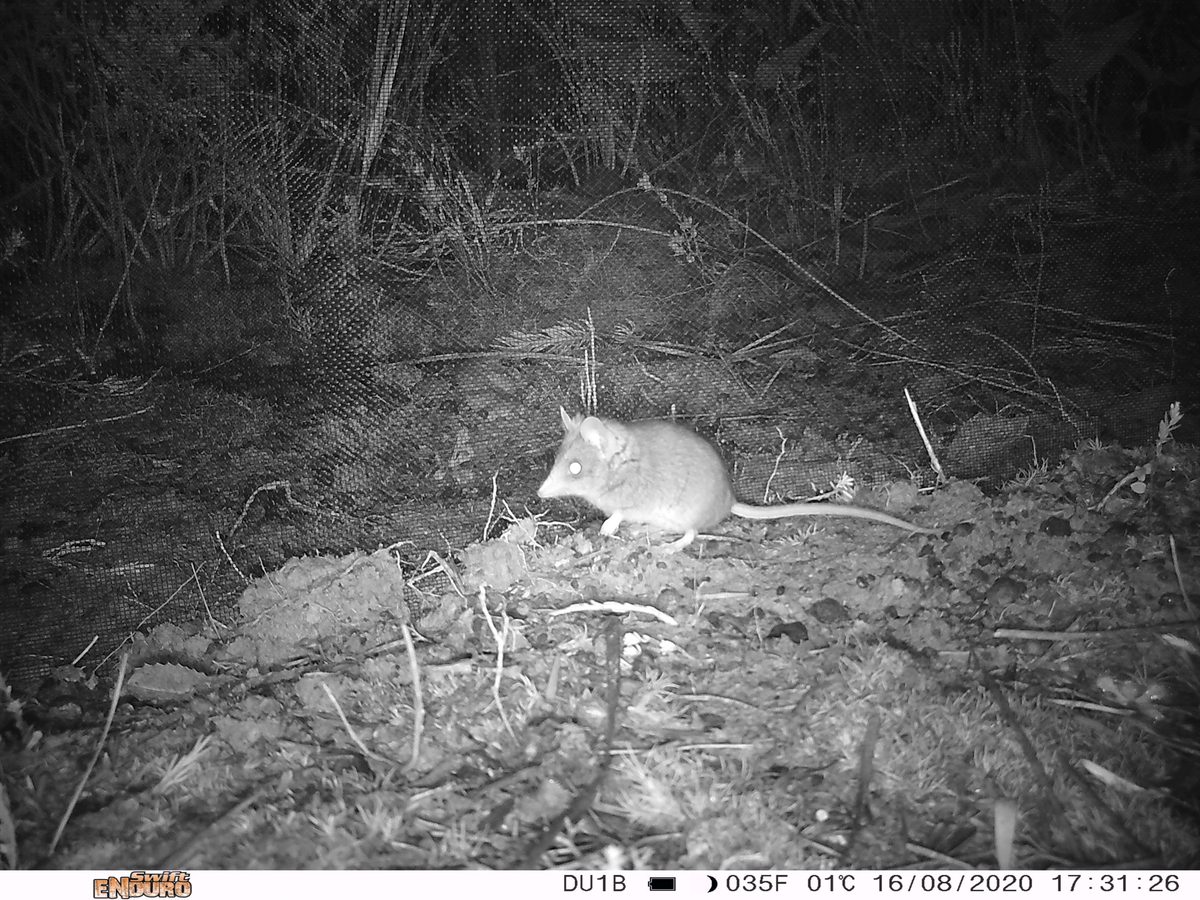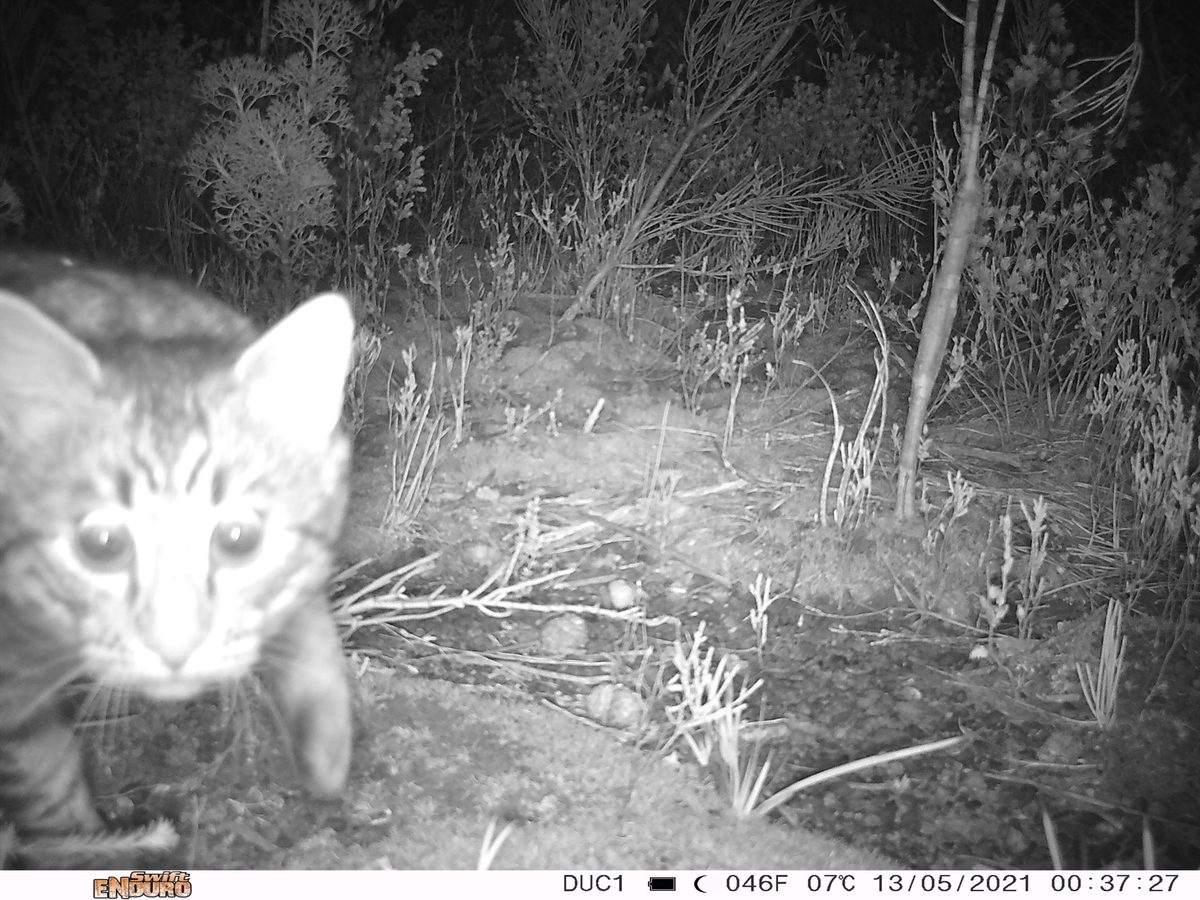Kangaroo Island dunnarts and banksias: together in a recovering landscape
Chance placement of a motion-activated camera to detect feral cats in Kangaroo Island dunnart habitat, has provided a unique insight into the many native species that depend on scarce food resources remaining after recent large-scale bushfires.
Chance placement of a motion-activated camera to detect the presence of feral cats on Kangaroo Island has provided a unique insight into the many native species that depend on scarce food resources remaining after recent large-scale bushfires.
This camera was focused on monitoring feral cats in the area but, to the side of frame, is a banksia flower in full bloom. This nectar filled flower has been a popular feeding site for the local wildlife, with hundreds of visits by a suite of species, including southern brown bandicoots, pygmy possums, native bush rats, honey eaters and brush-tailed possums. The banksia flower sits within a small, unburnt island in a vast landscape of burnt, but slowly-recovering, native vegetation.

Image above: Different species feeding on a banksia flower above from left to right: common brush-tailed possum, bush rat. Below from left to right: New Holland honeyeaters, pygmy possum and southern brown bandicoot.
The unburnt patch is so small, it wasn’t discovered by remote-sensing satellite imagery after the fires; understandable, considering it’s approximately the size of a house. It was stumbled upon by Kangaroo Island Landscape Board (KILB) field staff when a tinge of green canopy was spotted off in the distance from a high point near Shackle Road in the Ravine des Casoars Wilderness Protection Area. Closer inspection found an irregularly-shaped unburnt patch of native vegetation, which had been saved from the fires by a series of well-worn animal trails, acting as fire breaks from the approaching fire front.
There are many examples of this pattern across the fire scar; features such as animal trails, creek lines, and old prescribed burn scars prevented some areas from burning, saving little of what was left of critical habitat for a range of threatened species.
As with many of these unburnt patches, there is a striking contrast in life and activity – walking anywhere on burnt ground it’s hard to ignore the silence; it’s deathly quiet. Discovery of this unburnt patch, like most, is given away by the raucous chorus of birds – like there’s a party going on and everyone is invited.
With this site located, KILB’s driftlines and motion-activated cameras soon captured images of an endangered Kangaroo Island dunnart - a small mouse-sized marsupial endemic to Kangaroo Island. Immediately post-fire, there were grave concerns for its survival.

Image above: KI dunnart photographed at the same site as the popular banksia.
This small unburnt patch was the 27th site where the KILB team detected dunnarts. Since then, the team has found a further 40 sites on the island’s western end. Given that the KI dunnart had only been detected at 21 sites prior to the deadly 2019-20 bushfires, these results are very encouraging. It is still, however, early days since this species’ long-term fire response is completely unknown.
The presence of KI dunnarts and other threatened species either passing through or living within this patch has prompted the KILB dunnart recovery team to protect it, and other, critical refuges from our native wildlife’s enemy number one - feral cats. The KILB team install cat surveillance cameras at these sites to ensure they can be reactive in their feral cat management.

Image above: Feral cat photographed at the same site as the popular banksia.
Feral cats are ever-present in the landscape and, although it’s believed that as much as 65% of their population was killed in the fires, their impact is vastly magnified in a post-fire landscape. Feral cats are drawn to hunt in recently-burnt areas and hunt more effectively in open habitats, leaving reduced populations of vulnerable species at risk.
To protect these critical refuges, the KILB and the National Parks and Wildlife Service have been removing feral cats across these sites and, more broadly, across the fire scar. To date, this systematic and targeted approach has removed over 800 feral cats. With efforts set to continue over the next two years, the team is giving species like the KI dunnart a fighting chance in an environment that will take years to recover to the vibrant, banksia-rich landscape the Kangaroo Island’s diverse native wildlife depends upon.
This project is supported by the Kangaroo Island Landscape Board, through funding from the Australian Government’s Environment Restoration Fund and Bushfire recovery package for wildlife and their habitat.



